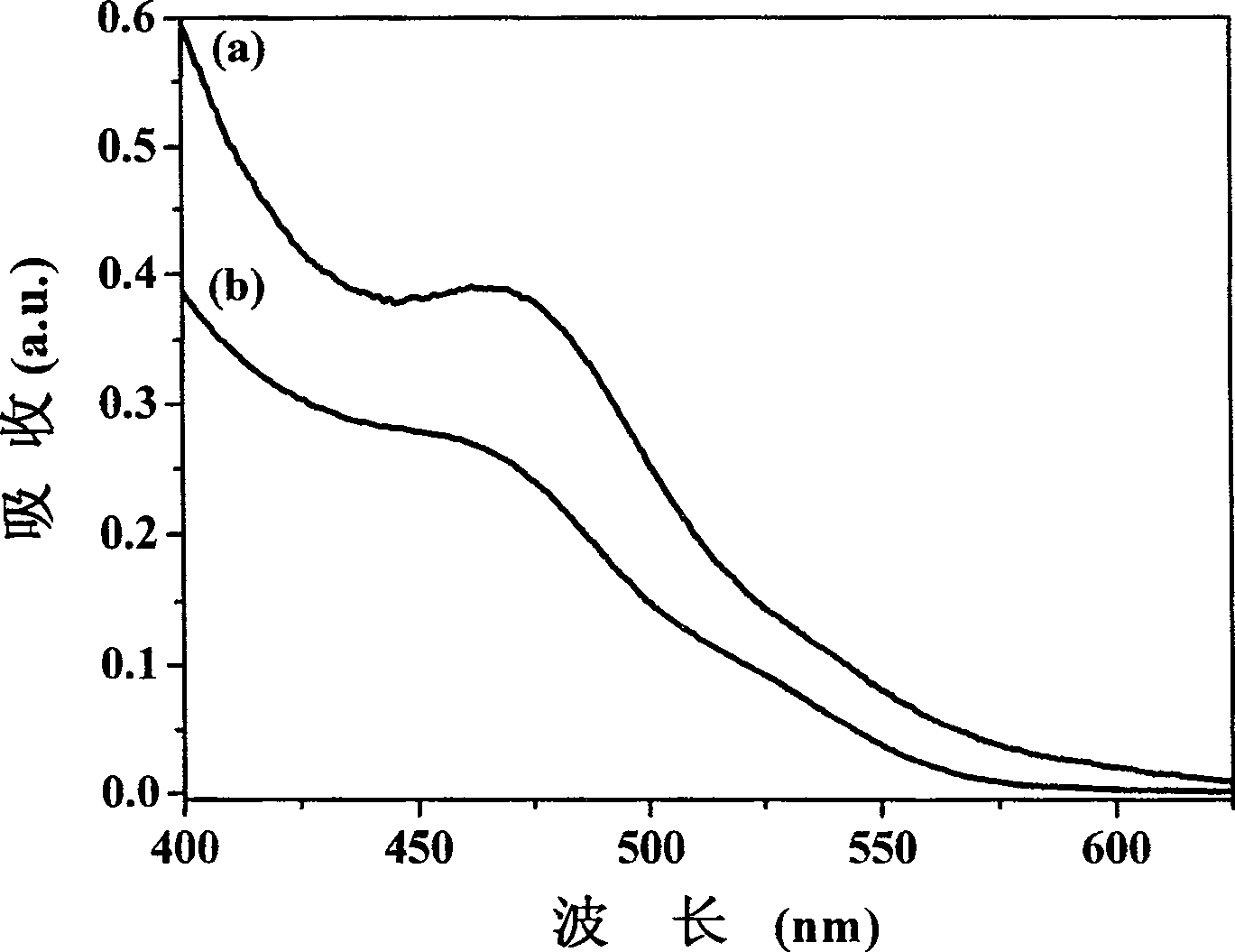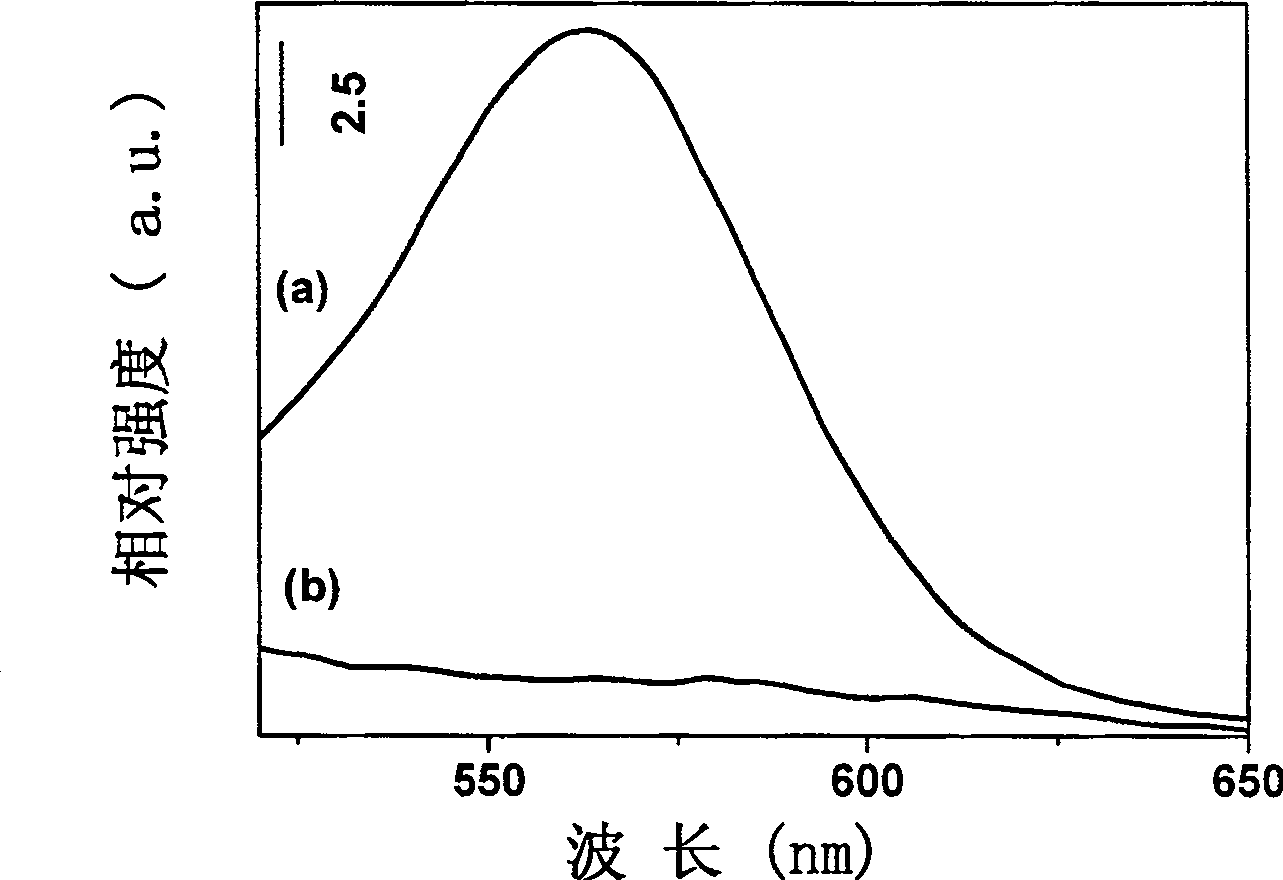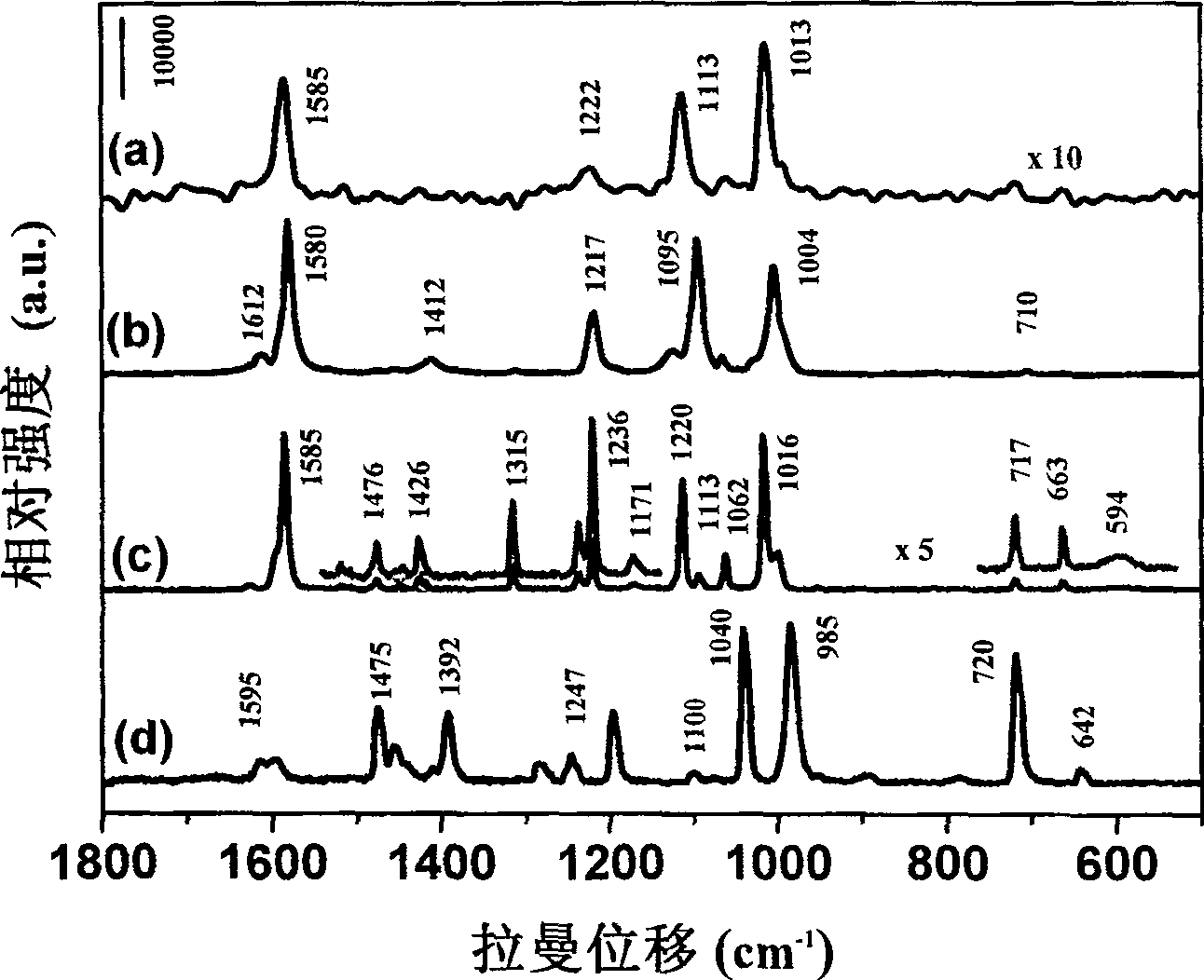SERS detection method employing nano semiconductor material as substrate
A nano-semiconductor, semiconductor technology, applied in the field of molecular recognition, can solve the problem of non-compliance of SERS intensity
- Summary
- Abstract
- Description
- Claims
- Application Information
AI Technical Summary
Problems solved by technology
Method used
Image
Examples
Embodiment 1
[0057] Surface functionalization of CdTe quantum dots:
[0058] Dissolve 80 mg of sodium borohydride in 1 ml of deionized water, add 127.5 mg of tellurium powder, and cool with an ice-water bath. During the reaction, the system communicates with the outside world through a small pinhole in order to release the generated hydrogen. After about 8 hours, the black tellurium powder disappeared and white sodium borate crystals were produced. A clear NaHTe solution was thus obtained.
[0059] Thiol-stabilized CdTe nanocrystals via Cd 2+ And NaHTe reaction preparation. 100ml of 4-mercaptopyridine (4-MPY), mercaptoamine (2DMAET) and cadmium nitrate (Cd(NO 3 ) 2 ) The pH value of the mixed solution was adjusted to 5.0-6.0 with 0.1N NaOH, and stirred vigorously. During this process, N 2 Gas deoxygenation. Then quickly add the self-prepared NaHTe solution, and continue to stir for 10-30 minutes to obtain a CdTe precursor solution. Among them, Cd 2+ 、HTe - , 4-MPY, 2DMAET molar r...
Embodiment 2
[0069]Surface functionalization of CdS quantum dots:
[0070] Nitrogen was passed through 100ml of purified water, 0.05g of 4-MPY was added, stirred vigorously until completely dissolved, and 2ml of 0.1M Cd(NO 3 ) 2 solution. After 5h, add 1.8ml of 0.1M Na 2 S aqueous solution. After continuing to stir for 12 hours, centrifuge and wash with water to obtain 4-MPY modified CdS particles.
[0071] SERS test of surface functionalized CdS quantum dots:
[0072] The CdS quantum dots prepared by the above method are used as the surface-enhanced Raman scattering (SERS) substrate, and it is directly confirmed that the CdS quantum dots have SERS activity, such as Figure 4 The SERS of 4-MPY on silver sol, CdTe nanoparticles and the Raman spectrum of 4-MPY respectively. (a) is the SERS spectrum of 4-Mpy adsorbed on CdTe nanoparticles, (b) is the SERS spectrum of 4-Mpy adsorbed on Ag sol (c) is the Raman spectrum of 4-MPY powder. Compared with the Raman spectrum of bulk molecules i...
Embodiment 3
[0075] Surface functionalization of ZnS quantum dots:
[0076] Nitrogen was passed through 100ml of purified water, 0.05g of 4-MPY was added, stirred vigorously until completely dissolved, and 2ml of 0.1M Zn(NO 3 ) 2 solution. After 5h, add 1.8ml of 0.1M Na 2 S aqueous solution. After continuing to stir for 12 hours, centrifuge and wash with water to obtain 4-MPY modified ZnS particles.
[0077] SERS test of surface functionalized ZnS quantum dots:
[0078] The CdS quantum dots prepared by the above method are used as the surface-enhanced Raman scattering (SERS) substrate, and it is directly confirmed that the ZnS quantum dots have SERS activity, such as Figure 5 The SERS of 4-MPY on silver sol, ZnS nanoparticles and the Raman spectrum of 4-MPY respectively. (a) is the SERS spectrum of 4-Mpy adsorbed on CdTe nanoparticles, (b) is the SERS spectrum of 4-Mpy adsorbed on Ag sol (c) is the Raman spectrum of 4-MPY powder.
[0079] Semiconductor ZnS nanoparticles exhibit str...
PUM
 Login to View More
Login to View More Abstract
Description
Claims
Application Information
 Login to View More
Login to View More - R&D
- Intellectual Property
- Life Sciences
- Materials
- Tech Scout
- Unparalleled Data Quality
- Higher Quality Content
- 60% Fewer Hallucinations
Browse by: Latest US Patents, China's latest patents, Technical Efficacy Thesaurus, Application Domain, Technology Topic, Popular Technical Reports.
© 2025 PatSnap. All rights reserved.Legal|Privacy policy|Modern Slavery Act Transparency Statement|Sitemap|About US| Contact US: help@patsnap.com



